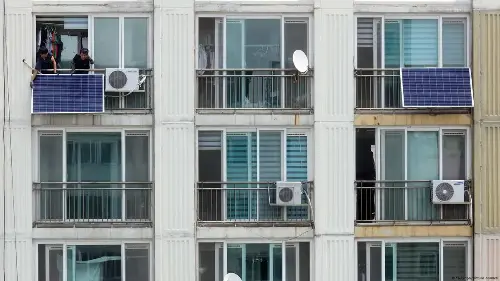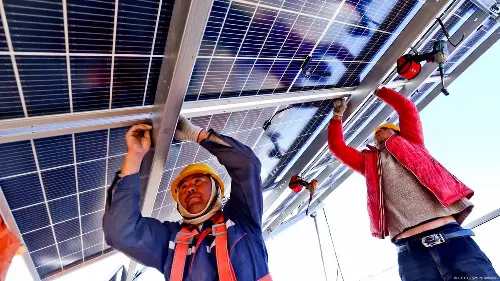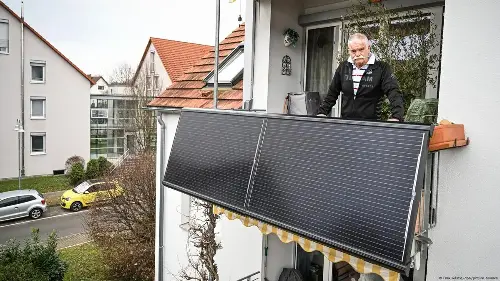
Sweltering summer temperatures are increasingly common, especially in cities where closely packed buildings and paved surfaces trap heat.
When temperatures climb above 30 degrees Celsius (86 degrees Fahrenheit), it can be a serious health hazard, especially for the elderly and sick.
And while drawing curtains to block out the sun during the day and ventilating homes during the night when its cooler may help, many turn to power intensive air conditioning units.
Fortunately, the sun itself can help us to stay cool.
Given that the sun generally shines for extended periods during the summer, solar power is ideal for producing the large volumes of electricity needed to cheaply run air conditioning that help make extreme heat more bearable.

How many solar panels are needed to cool a home?
This depends on the energy efficiency of the cooling system and the number of sunshine hours. But to given an example, for a well-insulated apartment of around 40 square meters (430 square feet), a small air conditioning unit requiring less than 1,000 watts would be enough.
A standard solar panel of around 2 square meters can generate up to 400 watts of electricity in direct sunlight, although on cloudy days it may only produce around 30% of that amount. But generally speaking for the small flat, electricity from three to four solar panels should be enough to run an air-con unit.
If, however, the home is poorly insulated or there are several devices such as computers running, it will heat up more and therefore require a bigger cooling system with higher power demands. In this case more solar panels could be installed.

How much does solar cost?
Solar energy has plummeted in price, with panels now costing only a tenth of what they did in 2005.
In cities, they are often installed on rooftops or balconies. To run a small air conditioning system, a so-called balcony power station which has four panels (1,600 watts) and costs around €1,000 ($1,080) in Europe, is usually sufficient. The solar power is simply fed into the grid via a normal socket.
Larger roof systems — which are installed by professionals — are more expensive. For a system with 25 panels (10,000 watts), homeowners in Germany can expect to pay between €13,000 to €18,000.
A solar panel of 400 watts which faces the midday sun generates roughly 400-800 kilowatt hours per year. With a service life of 30 years, this results in a solar power price of less than 10 euro cents per kilowatt hour (kWh), which is usually significantly cheaper than electricity from the grid.
Do they still work at night and during power cuts?
Cooler night temperatures often remove the need for cooling systems and the energy required to power them.
But those who do want to use solar power at night will requires a battery unit. A battery with 5-10 kWh for roof solar panels currently costs between €3,000 and €8,000 in Germany, including the price of installation.
Since solar energy is generally fed into the grid, a home unit is no safeguard against power cuts. Except with the addition of a special control system that comes with a price tag of at least €1,000.
Edited by: Anke Rasper
Sources:
https://www.mcc-berlin.net/en/news/information/information-detail/article/plummeting-prices-for-solar-power-and-storage-make-global-climate-transition-cheaper-than-expected.html Mercator Research Institute on Global Commons and Climate Change https://www.nature.com/articles/s41598-023-31469-z?fromPaywallRec=false Air-conditioning adoption and electricity demand highlight climate change mitigation–adaptation tradeoffs, report https://www.ise.fraunhofer.de/de/veroeffentlichungen/studien/aktuelle-fakten-zur-photovoltaik-in-deutschland.html Fraunhofer Institute for Solar and Energy Systems